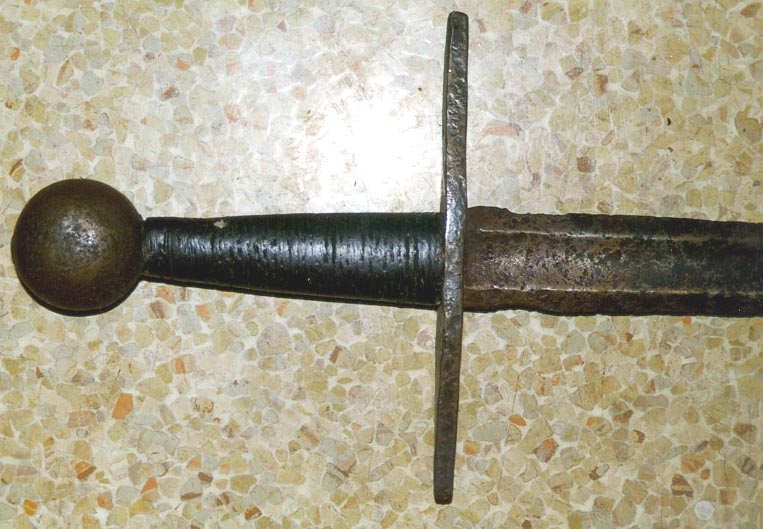
I do not believe there are any inlays of any metal on the blade. A very wide fuller extends nearly to the tip. I see no figure in the steel. The grip is made of waxed string and obviously new. The cross guard is well-formed steel, but appears as though it has been distressed and too new. The pommel is a simple flattened sphere with a different patina than the blade. The pened tang end, is visible in the attached image. Please e-mail your comments to Peter Bleed and cc: forum@vikingsword.com


Lee Jones replied (18 & 19 June 1998) From the photo, the fuller appears to be very well defined, with high edges, and fairly wide, considering the overall width of the blade, which seems a bit narrow, but rehoning may have caused that, if it were not intentional design. One of Oakshott's favorite swords, in the Wallace Collection in London, has a similarly well demarcated fuller.
I get a Twelfth or Thirteenth Century feel from the photo and no alarm bells are sounding.
I have noticed that the hilts on European medieval swords are
often of an iron (or lower carbon steel) of a different "color"
than the (steel of the) blade and that there frequently is less
corrosion on the hilt elements. The X.4 sword in the virtual
museum on this site is one example.